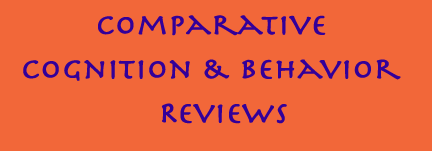 |
||
|
2011
|
Volume 6:25-46 |
|
|
|
|
|
|
|
|
|
|
|
Associative Learning in Insects: Evolutionary Models, Mushroom Bodies, and a Neuroscientific Conundrum
Karen L. Hollis
Mount Holyoke College
Lauren M. Guillette
University of Alberta
Environmental predictability has for many years been posited to be a key variable in whether learning is expected to evolve in particular species, a claim revisited in two recent papers. However, amongst many researchers, especially neuroscientists, consensus is building for a very different view, namely that learning ability may be an emergent property of nervous systems and, thus, all animals with nervous systems should be able to learn. Here we explore these differing views, sample research on associative learning in insects, and review our own work demonstrating learning in larval antlions (Neuroptera: Myrmeleontidae), a highly unlikely insect candidate. We conclude by asserting that the capacity for associative learning is the default condition favored by neuroscientists: Whenever selection pressures favor evolution of nervous systems, the capacity for associative learning follows ipso facto. Nonetheless, to reconcile these disparate views, we suggest that (a) models for the evolution of learning may instead be models for conditions overriding behavioral plasticity; and, (b) costs of learning in insects may be, in fact, costs associated with more complex cognitive skills, skills that are just beginning to be discovered, rather than simple associative learning. Video 1 depicts a simple prey capture in which an ant walks over the edge of the pit, slides down the pit wall, and is captured instantly by the antlion. Video 2 also depicts a successful capture, but in which the ant prey initially manages to cling to the pit wall, eliciting vigorous sand-tossing by the antlion. This video also shows how antlions pull their prey under the surface, behavior that subdues the prey, prevents it from injuring the antlion, and eliminates the possibility of the prey being rescued by its nestmates (Nowbahari, Scohier, Durand & Hollis, 2009). Both videos were shot with a Photron high-speed video camera, courtesy of Gary Gillis, Ph.D., Department of Biological Sciences, Mount Holyoke College. |
• Full-text PDF |
|
Published by the Comparative Cognition Society
How to reference this article:
Hollis, K. L. and Guillette, L. M. (2011). Associative Learning in Insects: Evolutionary Models, Mushroom Bodies, and a Neuroscientific Conundrum. Comparative Cognition & Behavior Reviews, 6, 25-46. Retrieved from http://psyc.queensu.ca/ccbr/index.html doi:10.3819/ccbr.2011.60004